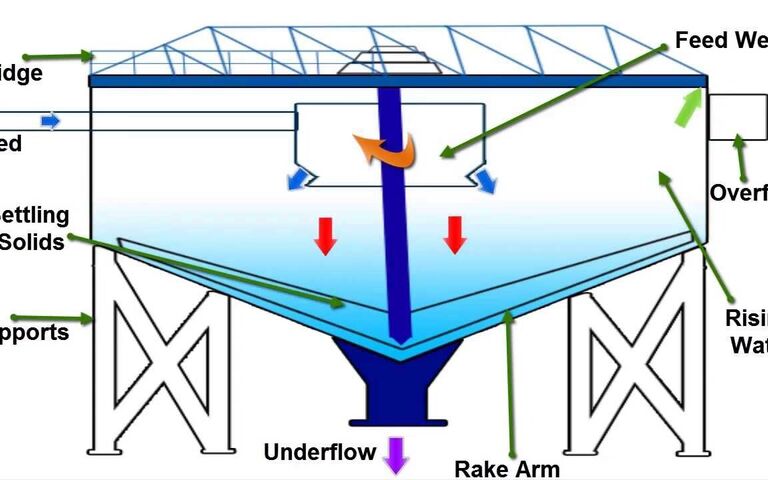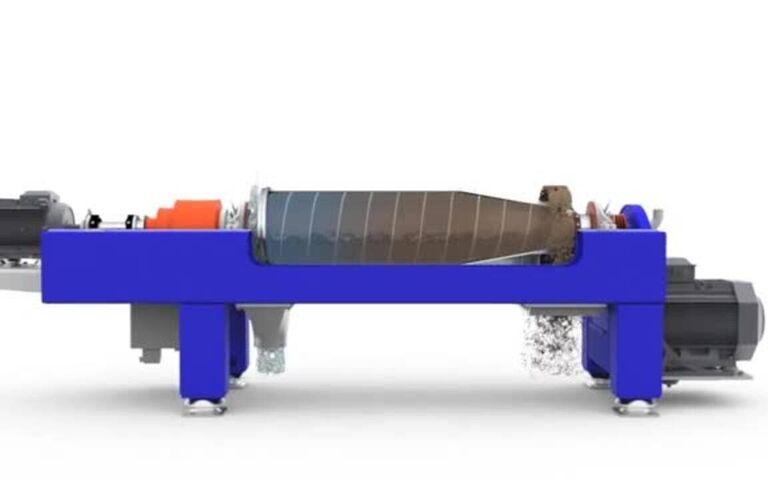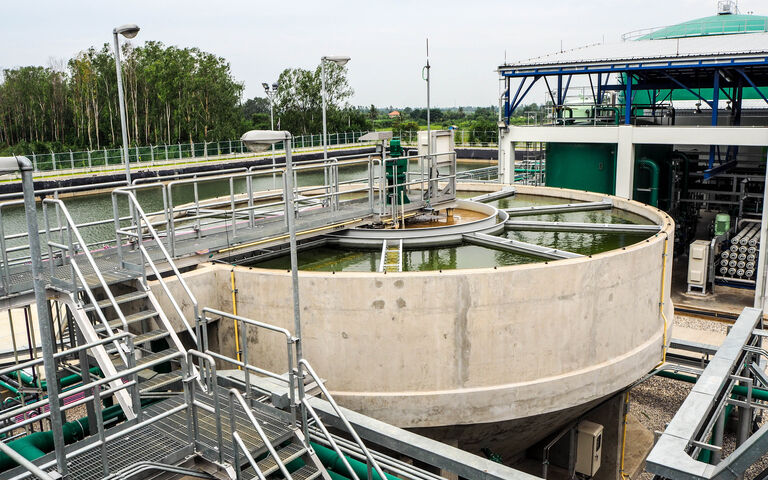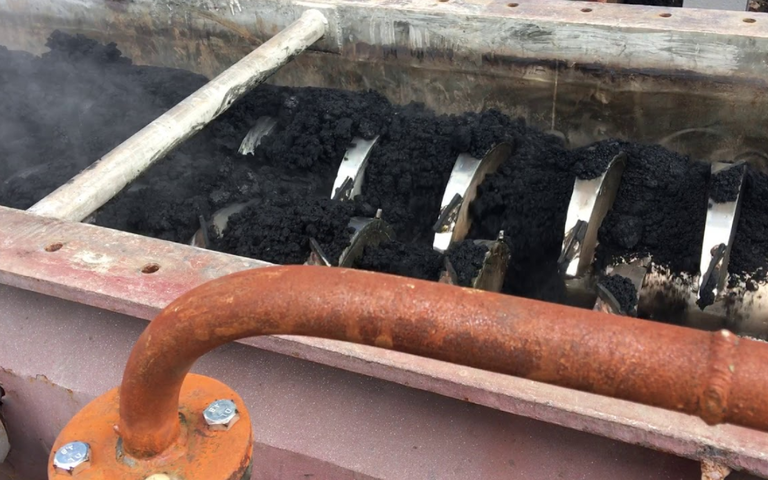Sludge separation − centrifugation

Overview of sludge centrifugation
The theory of centrifugation relates to sedimentation theory, since centrifugation acts to enhance gravity through the centrifugal force (or G force). The migration velocity of an unhindered spherical particle of diameter d under the influence of a centrifugal force is given by:
where:
ω is the angular velocity in radians/s (where frequency (Hz) = 2πω)
r is the radius of rotation in m,
μ is the dynamic viscosity in kg/(m.s), and
ρs and ρ are the respective densities of the particle and water in kg/m3.
This is the same as the Stokes Law equation from sedimentation theory, with ω2r replacing the gravitational constant g.
As with sedimentation theory, this equation is a simplification. In practice, particles are not spherical, and do not migrate in isolation but interact with others around it migrating at the same time (i.e., they are hindered). A number of correction factors are applied to account for these effects to provide the effective volumetric throughput Q of the centrifuge in m3/s:
where
V is the centrifuge internal volume,
Fp is a factor correcting for hindered migration, decreasing with increasing solids concentration,
θ is a shape factor (equalling 1 for spherical particles and increasing with decreasing sphericity), and
D is the distance the particle migrates before being retained in the centrifuge.
Fs roughly equals 1, 0.5, 0.1 and 0.05 for solids volume fractions of 1%, 3%, 12% and 20% respectively. The efficiency of solids removal depends on the residence time within the centrifuge, equal to Q/V, and the migration distance D. The maximum D value is given by the annular gap, equal to the difference in radius between the rotary screw and the inner surface of the bowl.
The centrifugation process efficiency is therefore dependent on the solids volume fraction, since this impacts on Fs, the effective surface area (A = V/D), and the force provided by the angular rotation velocity ω and the radius r, ω2r. The force is usually normalised against the acceleration due to gravity g (9.81 m/s2) to give ω2r/g – the unitless G force (G).
The product of the G force and the effective surface area, GA = ω2rV/(gD), is referred to as the sigma factor ∑, taking units of m2. ∑ represents the cross-sectional area of a gravity thickener having the same capacity.





